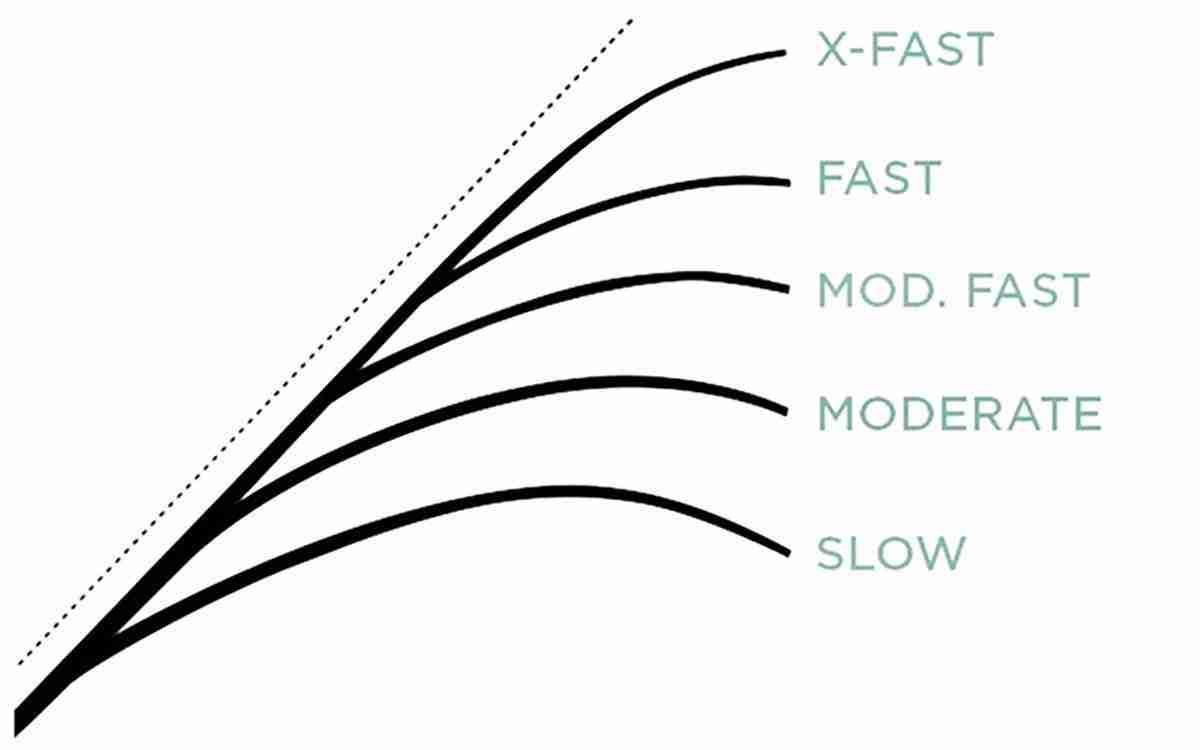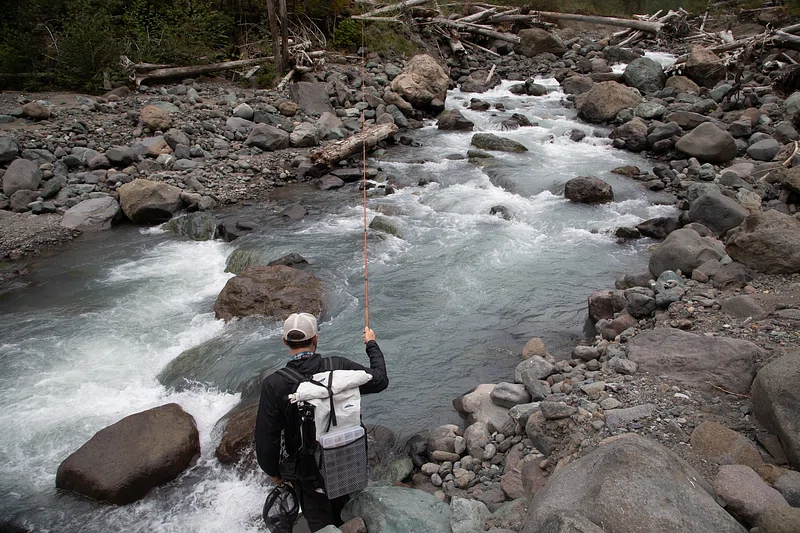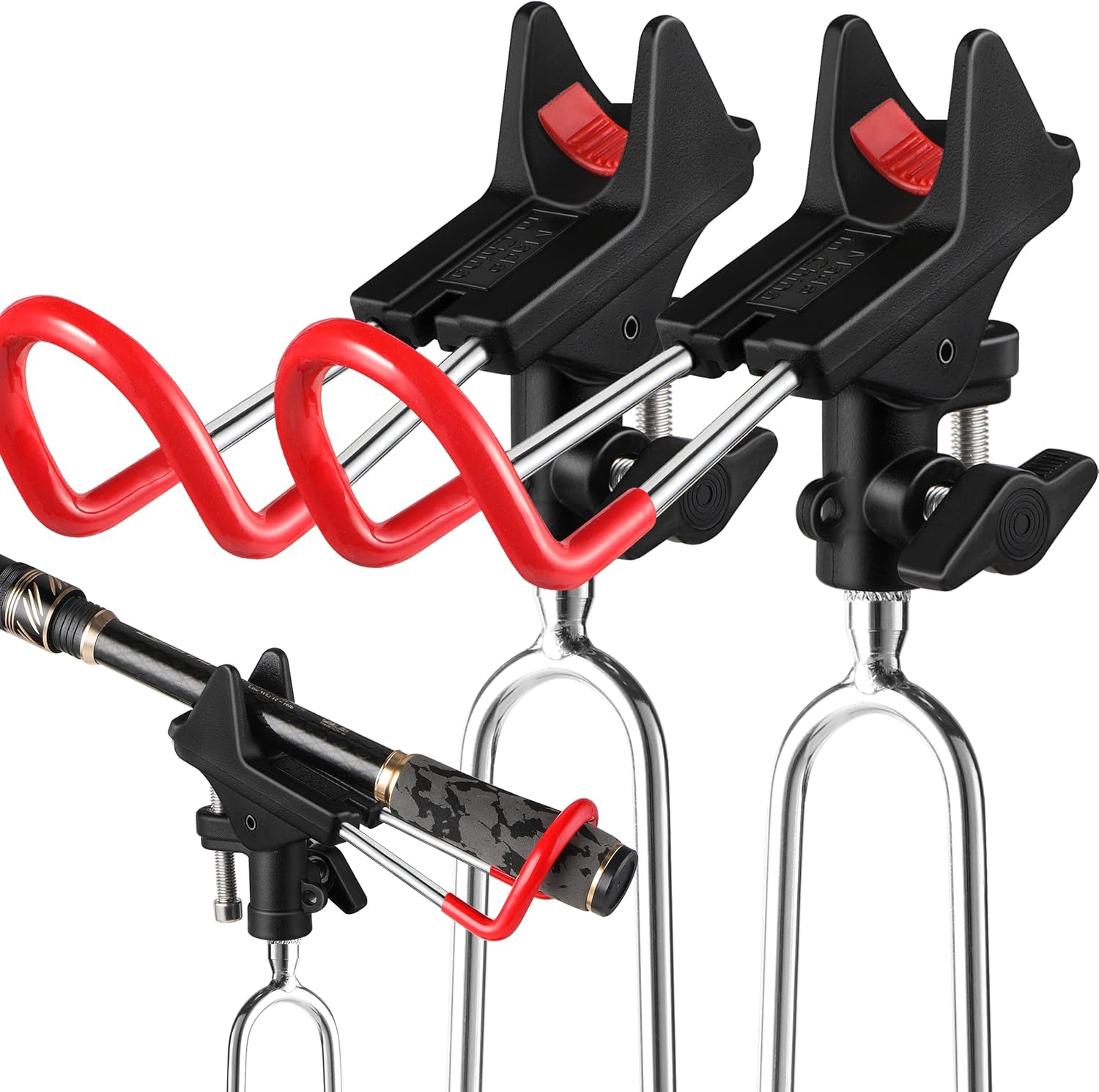
How to Secure Your Rod While Shore Fishing

11 min read
Picture this: you’re soaking bait on a beautiful evening, rod propped against a stick, when suddenly a fish hits hard and takes your entire setup for a swim. I’ve watched it happen more times than I can count—expensive rods and reels disappearing into the depths because someone thought “just for a minute” was safe enough.
Shore fishing often requires leaving your rod unattended, whether you’re running multiple lines, taking a bathroom break, or just grabbing a sandwich. But there’s a right way and a wrong way to secure your gear, and the difference can cost you hundreds of dollars in equipment.
After losing my first decent rod to a surprise fish (and watching plenty of others make the same mistake), I’ve learned that proper rod security isn’t just about protecting your investment—it’s about being ready when that fish of a lifetime decides to bite.
Understanding the Forces at Work
When a fish hits your bait hard, the forces involved are surprising. A five-pound bass making a sudden run can generate enough pull to drag a rod into the water faster than you can react. Add in the leverage of a long rod, and even smaller fish can create problems.
The physics are simple but often overlooked. Your rod acts like a lever, with the fulcrum at whatever’s supporting it. A fish pulling on the tip creates massive mechanical advantage that can overcome surprisingly heavy holding systems.
Water adds another complication. Wet rocks, muddy banks, and slippery surfaces all reduce the holding power of temporary setups. What seems secure on dry ground might not hold when conditions get damp.
Current and wind create constant pressure on your line, even without fish involved. This steady pull can gradually work your rod loose from inadequate supports, setting you up for disaster when a real fish finally hits.
The Foundation: Choosing Your Setup Location
Your rod security starts with where you choose to fish from. Rocky banks offer more anchoring options than soft mud or sand, but they also create challenges with uneven surfaces and sharp edges that can damage equipment.
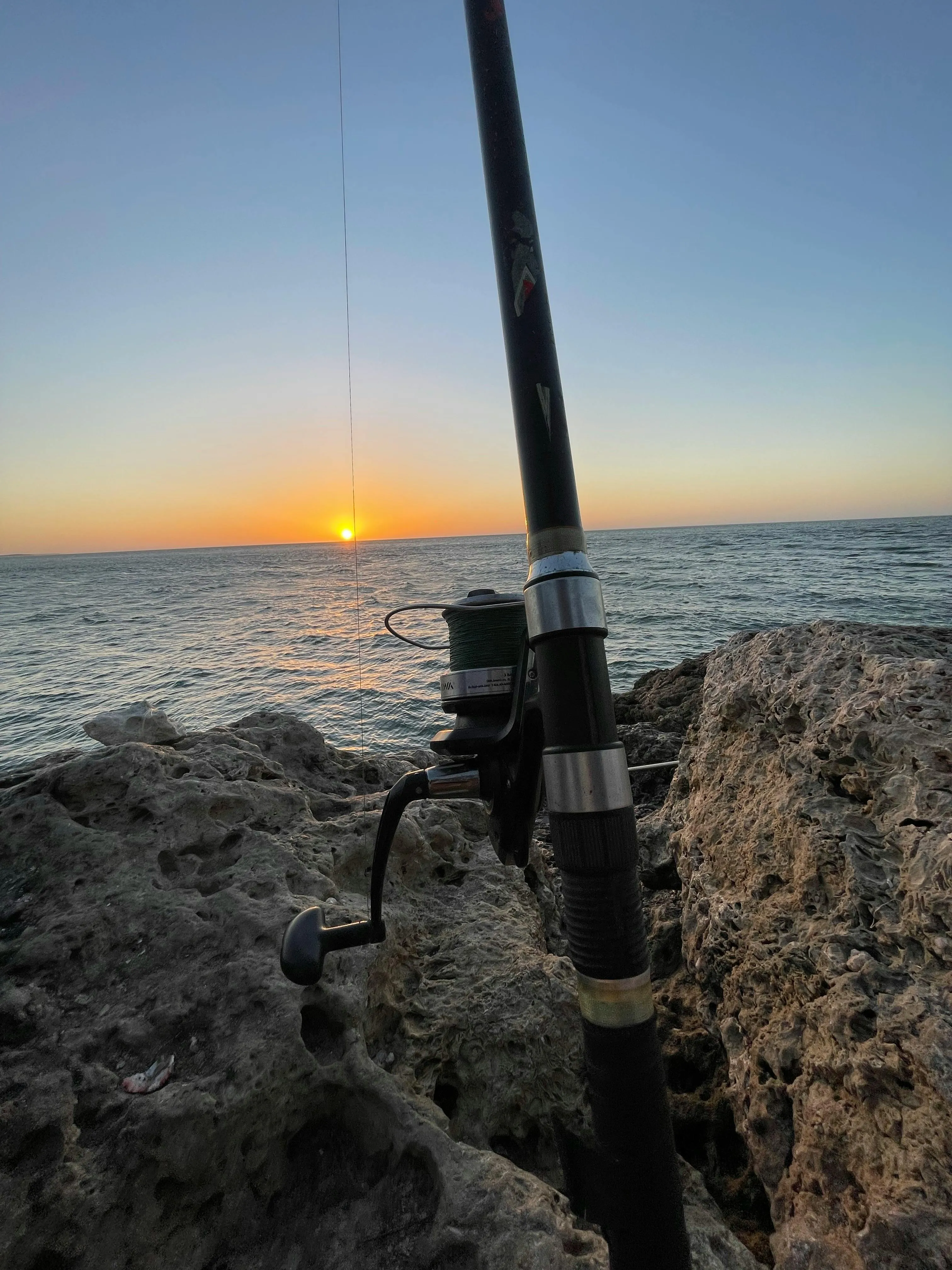
Look for natural features that can help secure your rod—large rocks, fallen logs, or sturdy vegetation. But inspect these features carefully. That dead branch might look solid but could snap under the pressure of a fighting fish.
Avoid setting up directly above deep water if possible. If your rod does get pulled in, you want it to end up in shallow water where you might be able to retrieve it. Even the best security systems can fail, so plan for that possibility.
Consider the wind direction and how it affects your line. Crosswinds can put constant tension on your setup, gradually working it loose over time. Position your rod so wind works with your security system rather than against it.
Commercial Rod Holders: The Professional Approach
Bank sticks and rod pods represent the gold standard for shore fishing rod security. These purpose-built tools drive deep into the ground and provide stable, adjustable platforms for your rods.
Quality bank sticks are made from strong steel or aluminum and feature sharp points that penetrate hard ground easily. The adjustable rest heads let you position your rod at the perfect angle for both fish detection and security.
Rod pods work well on hard surfaces where individual bank sticks won’t penetrate. They distribute weight across multiple contact points and often include built-in bite alarms and other fish detection features.
But here’s what many anglers don’t consider: even commercial rod holders need proper installation. Drive bank sticks in at an angle rather than straight down—this increases their holding power dramatically and helps them resist being pulled out by fighting fish.
DIY Solutions That Actually Work
You don’t need expensive commercial equipment to secure your rod effectively. Some of the best holding systems I’ve seen were improvised from materials most anglers already carry.
Large rocks make excellent rod supports when used correctly. The key is creating a stable platform rather than just leaning your rod against a single stone. Build a small pyramid of rocks that cradles your rod and distributes the load.
Dig a simple rod rest into sandy or muddy banks. A shallow trench that supports the rod butt combined with a forked stick for the tip creates a surprisingly secure system. The rod naturally settles into the depression, making it harder for fish to pull it loose.
Drive a sturdy stick into the ground at an angle, creating a natural fork to hold your rod. Choose green wood if possible—it’s stronger and less likely to snap under pressure. Dead branches often look sturdy but break at the worst possible moment.
Heavy tackle boxes or coolers can anchor rod holders on hard surfaces. Attach your rod holder to the heavy object using bungee cords or rope. The weight prevents the entire system from sliding, even under heavy fish pressure.
The Art of Proper Rod Positioning
How you position your rod in the holder matters as much as the holder itself. The angle affects both bite detection and security, and getting it wrong compromises both.
Position your rod so the tip is high enough to keep line off the water but not so high that wind becomes a major factor. A 45-degree angle works well for most situations, providing good leverage for fish detection while maintaining security.
Balance is crucial. The rod should rest in the holder with slight forward pressure—not so much that it wants to fall out the front, but enough that it won’t slide backward when a fish hits.
Consider the direction of the expected strike. Position your rod so a hitting fish pulls it deeper into the holder rather than lifting it out. This usually means angling the holder slightly forward from perpendicular to the shoreline.
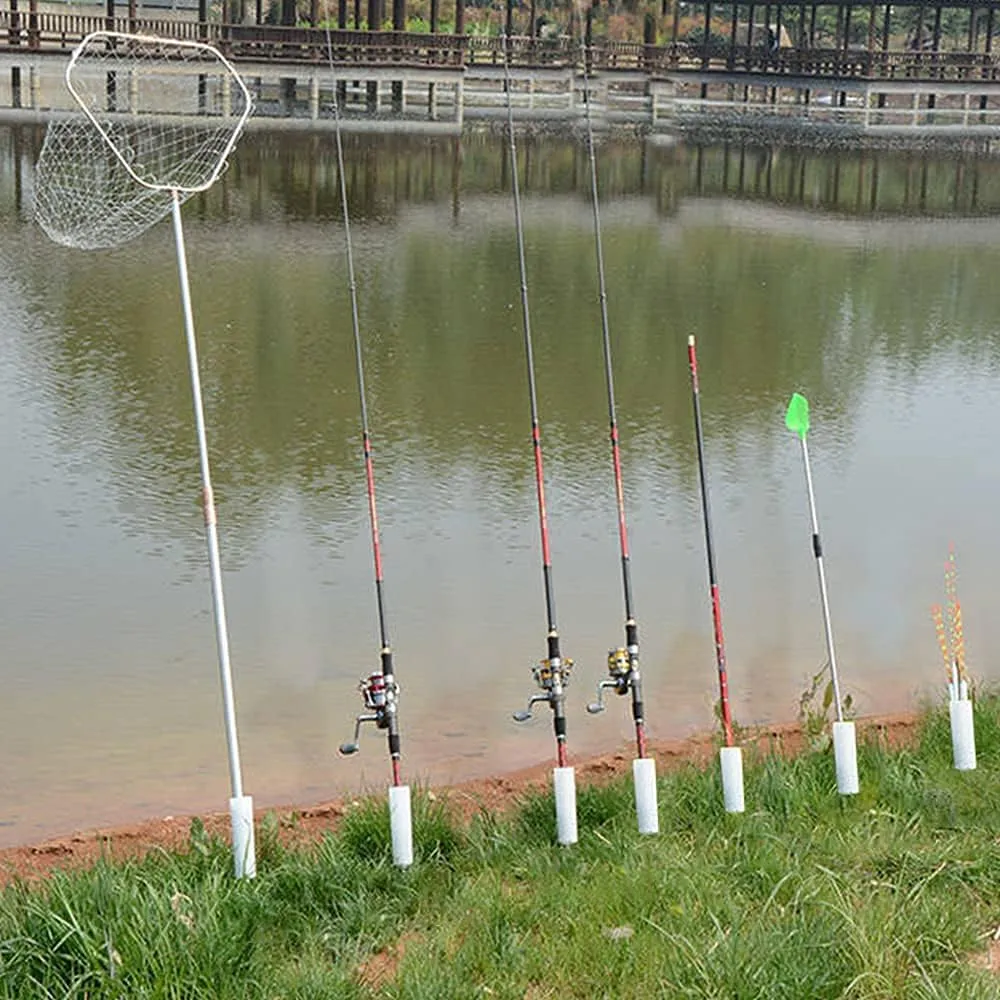
Multiple Rod Management
Running several rods simultaneously requires extra attention to security. Each rod needs its own secure holder, and you need to position them so they don’t interfere with each other during fights.
Space rods far enough apart that playing one fish doesn’t tangle the others. This usually means at least six feet between rod tips, more if you’re fishing for species that make long runs.
Create a hierarchy in your setup. Put your most expensive rod in the most secure holder, and position it where you can reach it quickly if something goes wrong with the others.
Consider using different holder types for different situations. Your primary fishing rod might go in a premium bank stick, while backup rods can use simpler holders that still provide adequate security.
Mark your rod positions if you’re fishing in low light. Small reflective tape on rod holders or glow sticks attached to rod tips help you find your equipment quickly when fish hit after dark.
Backup Security Systems
Even the best primary holders can fail, so smart anglers build in backup security. These secondary systems might not hold your rod perfectly, but they can prevent total loss if the primary system fails.
Attach a safety line from your rod to a solid anchor point. Use light line that won’t interfere with casting but will stop your rod from disappearing completely. The safety line should be long enough to let you play fish normally but short enough to prevent loss.
Bungee cords make excellent backup restraints. Hook one end to your rod and the other to a solid anchor. The elastic nature absorbs shock loads while providing positive retention.
Some anglers use small bells or electronic bite alarms as both fish detectors and security devices. The sound alerts you to problems before they become disasters, giving you time to intervene.
Position a backup rod nearby when possible. If you lose your primary setup, having another rod ready lets you get back in the game quickly rather than ending your fishing session.
Dealing with Difficult Conditions
Rocky shores present unique challenges for rod security. Hard surfaces resist penetration by bank sticks, but the uneven terrain offers creative anchoring opportunities.
Use rock crevices to your advantage. Wedge rod holders into natural gaps, or build small rock walls that cradle your rod holder and prevent it from sliding.
Carry a small sledgehammer or heavy mallet for driving bank sticks into hard ground. The extra effort pays off in increased security, especially in areas where other anglers have struggled with inadequate holders.
Sandy beaches require different approaches. Bank sticks penetrate easily but may not hold under load. Drive them deeper than you think necessary, and angle them to resist the expected pull direction.
Consider the tide if you’re fishing tidal waters. What seems like a secure setup at low tide might be underwater at high tide. Plan your security system for the conditions you’ll face throughout your fishing session.
Electronic Bite Detection and Rod Security
Modern bite alarms serve double duty as both fish detectors and security devices. Quality alarms clamp securely to your rod and sound immediately when line movement occurs.
Set bite alarms to be sensitive enough to detect gentle takes but not so sensitive that wind or current triggers false alarms. Most quality units offer adjustable sensitivity settings.
Position electronic alarms where you can hear them from anywhere in your fishing area. There’s no point having great bite detection if you can’t hear it when you step away from your rods.
Consider wireless bite alarm systems for multi-rod setups. These systems let you carry a receiver that alerts you to activity on any rod, even when you’re exploring different areas of the shore.
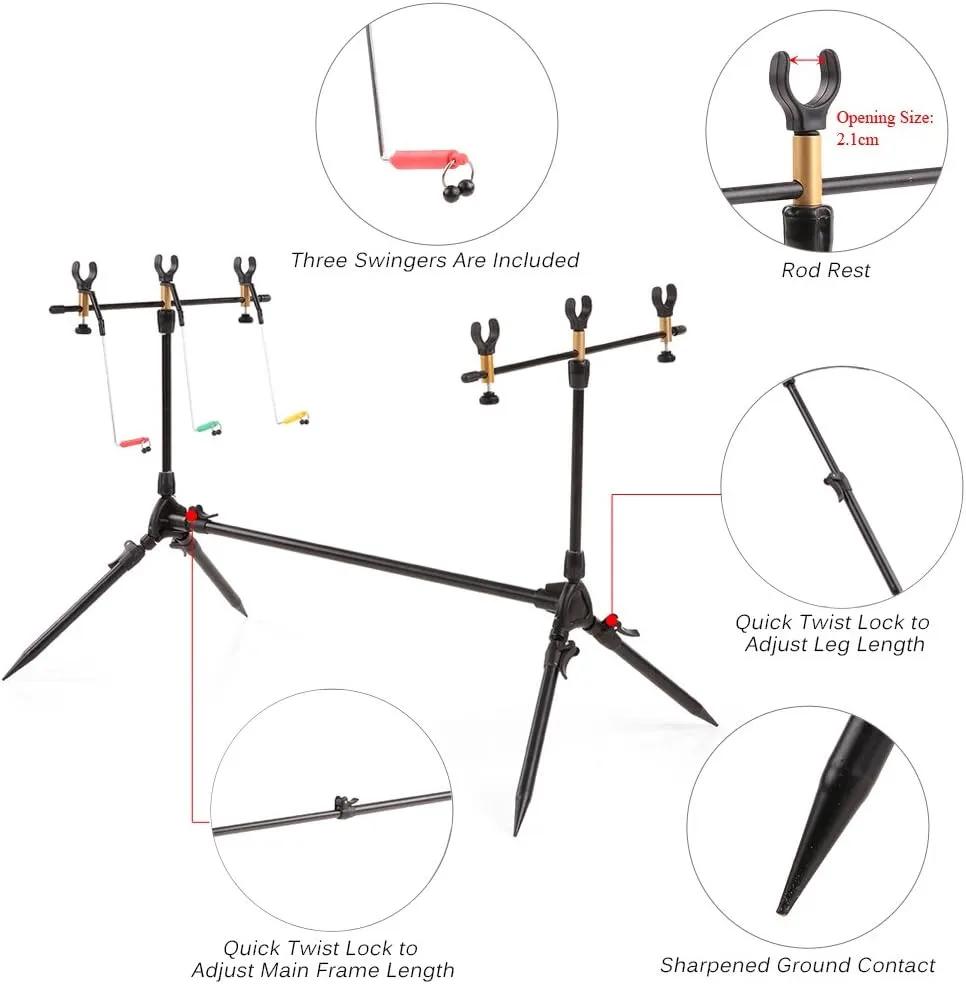
When Security Systems Fail
Despite your best efforts, rod security systems sometimes fail. Knowing how to respond quickly can mean the difference between losing equipment and making a great recovery.
Stay calm and assess the situation immediately. Is your rod still visible? Is it moving toward deeper water? Can you wade out and retrieve it safely?
Don’t risk your safety trying to save equipment. No rod is worth drowning for, and insurance can replace fishing gear but not your life.
If your rod is still attached to a fish, that fish is probably more tired than when it first hit. You might be able to hand-line it back to shore if you can reach the line safely.
Learn from failures. Examine what went wrong and adjust your security system accordingly. Most failures happen for predictable reasons that you can prevent in the future.
Seasonal Considerations
Different seasons present unique challenges for rod security. Spring fishing often involves muddy banks and unstable ground that can’t support heavy loads reliably.
Summer heat affects some security materials. Plastic components can become brittle, and metal parts get hot enough to cause burns during adjustment.
Fall fishing frequently involves wind and unstable weather that tests security systems. What works on calm days might fail when conditions deteriorate.
Winter fishing presents the ultimate test for rod security. Frozen ground resists bank stick penetration, and ice can make secure footing impossible.
Building a Complete Security System
Effective rod security requires more than just a good holder. Think of it as a complete system that includes positioning, backup restraints, detection devices, and response plans.
Start with the best primary holder you can afford, properly installed for the conditions you’re facing. Add backup security appropriate to the value of your equipment and the consequences of failure.
Include detection devices that alert you to problems before they become disasters. This might be electronic alarms, visual indicators, or just positioning yourself where you can monitor your equipment.
Have a response plan for when things go wrong. Know how you’ll react if a rod gets pulled in, what equipment you’ll sacrifice to save more valuable gear, and when you’ll call for help.
The Economics of Rod Security
Quality rod holders cost money upfront but save much more in the long run. Losing one decent rod and reel typically costs more than buying several years’ worth of proper security equipment.
Consider the replacement cost of your equipment when choosing security systems. A fifty-dollar rod might justify a ten-dollar holder, but a five-hundred-dollar setup deserves professional-grade security.
Factor in the inconvenience cost of lost equipment too. Losing your rod doesn’t just cost money—it ends your fishing trip and ruins what should have been an enjoyable day.
Think of rod security as insurance. You hope you’ll never need it, but when you do, you’ll be grateful you invested in quality systems.
The best rod security system is the one you actually use consistently. Elaborate setups that are difficult to deploy often get skipped when you’re tired or in a hurry. Simple, effective systems that become automatic habits provide better real-world protection than complex solutions that stay in your tackle box.
Remember, the goal isn’t just protecting your equipment—it’s maintaining your ability to catch fish throughout your fishing session. A rod that gets pulled into the lake can’t catch the fish that bite an hour later. Proper security keeps you in the game and ready for whatever the water delivers.
